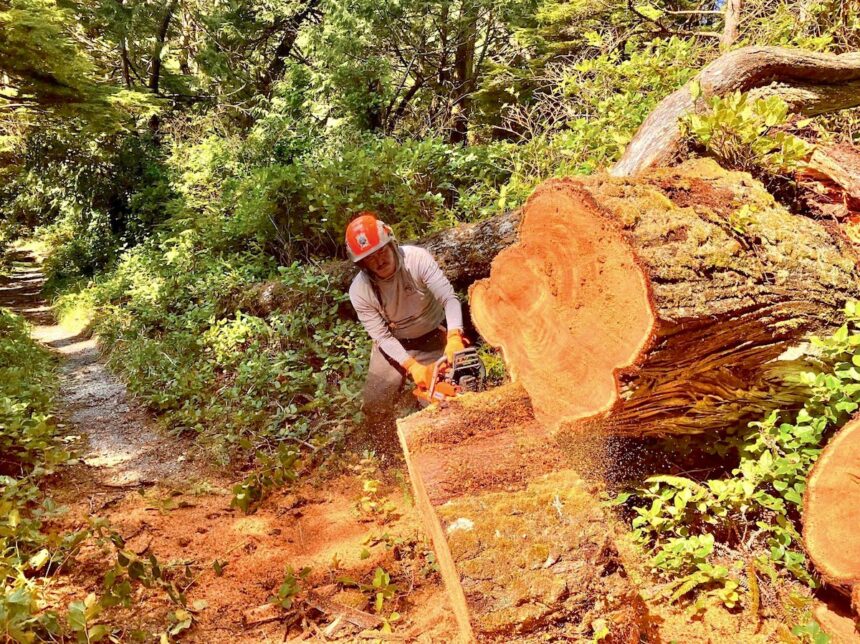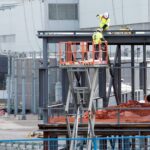The iconic West Coast Trail, jewel of British Columbia’s outdoor adventure scene, stands at a critical juncture following unprecedented storm damage that has raised serious questions about its immediate future. What was once a challenging but navigable 75-kilometer coastal trek has transformed into a labyrinth of fallen ancient cedars, washed-out suspension bridges, and compromised boardwalks that now threaten both the trail’s accessibility and its carefully preserved ecological balance.
“We’re facing a recovery effort unlike anything we’ve seen in the trail’s modern history,” explains Parks Canada superintendent Diane Thompson. “The combination of intensifying winter storms and king tides has altered sections of the trail that have remained relatively stable for decades.”
The devastation, which Parks Canada officials estimate will require at least $4.2 million in emergency repairs, comes at a particularly unfortunate moment as British Columbia’s tourism sector was finally rebounding from pandemic-related downturns. The West Coast Trail typically generates approximately $15 million annually for Vancouver Island’s coastal communities, with businesses in Port Renfrew and Bamfield particularly dependent on the steady stream of hikers who traverse the historic path each season.
According to meteorological data from Environment Canada, the winter of 2024-2025 delivered three “atmospheric river” events to Vancouver Island’s west coast between November and March, with rainfall totals exceeding historical averages by 42%. These storms, intensified by warming Pacific Ocean temperatures, triggered numerous landslides along the trail’s more vulnerable sections.
Local First Nations communities hold particular concerns about the damage. The trail traverses the traditional territories of the Huu-ay-aht, Ditidaht, and Pacheedaht First Nations, who co-manage the route with Parks Canada.
“This isn’t just about tourism dollars,” says Charles Jones, a Pacheedaht Nation council member. “These forests and coastlines contain cultural sites and resources central to our people’s identity. The damage threatens both our economic interests and our heritage preservation efforts.”
Parks Canada has already announced a delayed opening for the 2025 hiking season, with the earliest possible access now scheduled for late June rather than the traditional May 1st start date. Even then, officials warn that hikers should prepare for significant detours and potentially more challenging conditions than usual.
Environmental scientists monitoring the situation note that while storms have always impacted the trail, the intensity and frequency of weather events appear to be accelerating. Dr. Emma Chen, a climate researcher at the University of Victoria, has been studying coastal erosion patterns along the Pacific Rim.
“What we’re witnessing is consistent with climate change projections for this region,” Chen explains. “The combination of rising sea levels and more powerful winter storm systems creates a compounding effect on coastal infrastructure, whether natural or human-made.”
The rebuilding effort will focus not just on repairing damaged sections but on enhancing resilience against future storms. Parks Canada engineers are exploring designs for more flexible suspension bridges, anchored boardwalks that can better withstand flooding, and drainage systems capable of handling increased water volume.
For the thousands of hikers who had secured the coveted permits for early-season treks, the news has been disappointing but largely met with understanding. The West Coast Trail’s permit system typically sees demand far exceeding the daily 75-person capacity, with reservations often filling within hours of becoming available.
“Of course I’m disappointed,” says Melissa Jagpal, a Vancouver resident who had planned her first West Coast Trail hike for May. “But having seen the photos of the damage, I completely understand the closure. You can’t rush the restoration of something this precious.”
Local tourism operators are adapting by promoting alternative hiking experiences like the Juan de Fuca Marine Trail and sections of the Sunshine Coast Trail, though these lack the remote wilderness appeal and historical significance that make the West Coast Trail an international destination.
As British Columbia grapples with yet another climate-related challenge to its natural infrastructure, the question emerges: how will iconic wilderness experiences like the West Coast Trail adapt to a future where such extreme weather events become increasingly commonplace rather than exceptional?
For more information on this ongoing story, visit our Canada News section, where we’ll continue tracking the restoration efforts and reopening timeline for this beloved national treasure.










